-
The real reason for a decline in violent crime
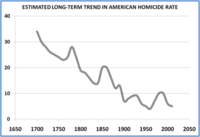
A scientific analysis of twenty million words recorded during 150 years of criminal trials at London’s Old Bailey reveals how changes in culture rather than law helped to reduce violent crime, according to a new study. “What we have been able demonstrate through analyzing the language used in court is that the decline in less serious forms of violence, such as assault, was not led by legislation or moments of dramatic change in the law, but by social attitudes,” says one of the authors.
-
-
Chemical pollution of European waters is worse than anticipated

Until now environmental authorities and parts of the scientific community have considered toxic chemicals to be rather a local problem affecting only a few bodies of water. A new study, however, reveals for the first time on a large scale the ecological risks emanating from chemical toxicants for several thousands of European aquatic systems. Chemical toxicity represents an ecological threat to almost half of all European bodies of water, and in approximately 15 percent of cases, the biota in freshwater systems may even be subject to acute mortality.
-
-
Smart coating could make oil-spill cleanup faster and more efficient
In the wake of recent off-shore oil spills, and with the growing popularity of “fracking” — in which water is used to release oil and gas from shale – there is a need for easy, quick ways to separate oil and water. Now, scientists have developed coatings that can do just that.
-
-
Urban man-made drainage may increase risk of flooding
Installing drainage systems in developing towns and cities can cause water to reach rivers more quickly, potentially raising the risk of flooding, say scientists. They suggest that, in some cases, storm drains may do more to increase the risk of flooding than changes in the land surface.
-
-
Towns in northeast U.S. develop adaptation strategies for climate change
In many northeastern towns along the coast of the United States, local officials are attempting to identify and predict the effects of climate change which will occur over the next few decades. “You’re going to feel impacts. It’s a global issue with local effects…We don’t know exactly what’s coming, so let’s plan to be adaptable,” says a leader of a regional climate adaptation project.
-
-
Laser weapon developed for Marine vehicles

As the U.S. Navy prepares to deploy its first laser weapon on a ship later this summer, Office of Naval Research (ONR) officials announced that they have finished awarding contracts to develop a similar weapon to be used on ground vehicles. The Ground-Based Air Defense Directed Energy On-the-Move program, commonly referred to as GBAD, aims to provide an affordable alternative to traditional firepower to keep enemy unmanned aerial vehicles (UAVs) from tracking and targeting Marines on the ground.
-
-
Debate continues over controversial lawsuit-killing Louisiana oil bill
Governor Bobby Jindal (R-Louisiana) is facing a difficult decision over whether or not to veto a measure which would kill a contentious lawsuit filed by the Southeast Louisiana Flood Protection Authority-East (SLFPA-E) against ninety-seven different oil and gas companies regarding long-term environmental damage claims, including those of the 2010 Deepwater Horizon explosion.
-
-
Reducing use of nitrogen-based fertilizers helps combat climate change
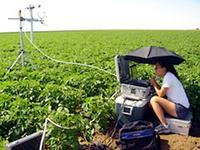
Nitrogen-based fertilizers spur greenhouse gas emissions by stimulating microbes in the soil to produce more nitrous oxide. Nitrous oxide is the third most important greenhouse gas, behind only carbon dioxide and methane, and also destroys stratospheric ozone. Agriculture accounts for around 80 percent of human-caused nitrous oxide emissions worldwide, which have increased substantially in recent years, primarily due to increased nitrogen fertilizer use. Scientists help farmers around the globe apply more-precise amounts of nitrogen-based fertilizer to help combat climate change.
-
-
New, more effective teaching approach for engineering education
Purdue University researchers who developed a new approach more effectively to teach large numbers of engineering students are recommending that the approach be considered for adoption by universities globally. The system, called the Purdue Mechanics Freeform Classroom, allows students to interact with each other and faculty online while accessing hundreds of instructional videos and animations. The approach also might be used for any large STEM-related courses.
-
-
Connecticut preparing for sea level rise, adapting to climate change
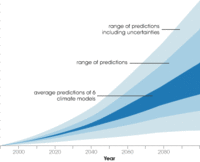
Earlier this year the University of Connecticut announced the creation of the Institute for Community Resiliency and Climate Adaptation. the Institute is designed to increase the resilience and sustainability of vulnerable communities and individuals along Connecticut’s coast and inland waterways as they are affected by the growing impact of climate change on the environment.
-
-
Security guard industry lacks standards, training
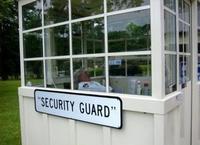
Despite playing a more important role in the wake of 9/11, the security guard industry remains plagued by inadequate training and standards in many states, new study of the $7 billion-a-year industry finds. Formal training of the nation’s one million-plus private security officers is widely neglected, a surprising finding when contrasted with other private occupations such as paramedics, childcare workers, and even cosmetologists.
-
-
Nationwide effort launched to weather-harden Canadian cities
The frequency and magnitude of extreme weather events in Canada — from the floods in Southern Alberta and Toronto to the December ice storm in Central and Eastern Canada — are increasing, causing billions of dollars in damage to infrastructure, businesses and homeowners. Intact Financial Corporation and the University of Waterloo announced a national initiative involving the implementation of twenty climate change adaptation projects designed to reduce the physical, financial, and social impacts of extreme weather events in Canada.
-
-
Better building design, maintenance would cut building sector’s emissions by around 80%
The construction industry, which uses half of the 1.5 billion tons of steel produced each year, could slash its carbon emissions by as much as 50 percent by optimizing the design of new buildings, which currently use double the amount of steel and concrete required by safety codes. If buildings are also maintained for their full design life and not replaced early, the sector’s emissions could in total be cut by around 80 percent.
-
-
New material captures CO2 at natural gas wellheads
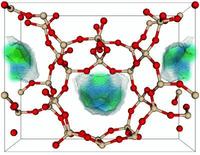
Natural gas is the cleanest fossil fuel. Development of cost-effective means to separate carbon dioxide during the production process will improve this advantage over other fossil fuels and enable the economic production of gas resources with higher carbon dioxide content that would be too costly to recover using current carbon capture technologies. Rice University chemists invented a porous material which sequesters carbon dioxide, a greenhouse gas, at ambient temperature with pressure provided by the wellhead, and lets it go once the pressure is released. The material shows promise to replace more costly and energy-intensive processes.
-
-
Hurricanes with female names deadlier than male-named storms
In the coming Atlantic hurricane season, watch out for hurricanes with benign-sounding names like Dolly, Fay, or Hanna. According to a new study, hurricanes with feminine names are likely to cause significantly more deaths than hurricanes with masculine names, apparently because storms with feminine names are perceived as less threatening.
-
More headlines
The long view
New Technology is Keeping the Skies Safe
DHS S&T Baggage, Cargo, and People Screening (BCP) Program develops state-of-the-art screening solutions to help secure airspace, communities, and borders
Factories First: Winning the Drone War Before It Starts
Wars are won by factories before they are won on the battlefield,Martin C. Feldmann writes, noting that the United States lacks the manufacturing depth for the coming drone age. Rectifying this situation “will take far more than procurement tweaks,” Feldmann writes. “It demands a national-level, wartime-scale industrial mobilization.”
How Artificial General Intelligence Could Affect the Rise and Fall of Nations
Visions for potential AGI futures: A new report from RAND aims to stimulate thinking among policymakers about possible impacts of the development of artificial general intelligence (AGI) on geopolitics and the world order.
Smaller Nuclear Reactors Spark Renewed Interest in a Once-Shunned Energy Source
In the past two years, half the states have taken action to promote nuclear power, from creating nuclear task forces to integrating nuclear into long-term energy plans.
Keeping the Lights on with Nuclear Waste: Radiochemistry Transforms Nuclear Waste into Strategic Materials
How UNLV radiochemistry is pioneering the future of energy in the Southwest by salvaging strategic materials from nuclear dumps –and making it safe.
Model Predicts Long-Term Effects of Nuclear Waste on Underground Disposal Systems
The simulations matched results from an underground lab experiment in Switzerland, suggesting modeling could be used to validate the safety of nuclear disposal sites.
